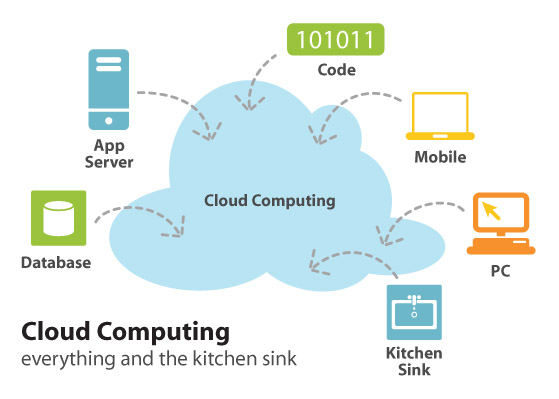Doing Architecture with Agile Teams | Iasa UK Architect Summit 2013.26th April 2013.
Tag: Software Architecture
IT Success and Failure — the Standish Group CHAOS Report Success Factors
The Standish Group have been famously (notoriously) publishing their CHAOS Report with IT project success/failure/challenged rates since 1994. "XXX% of all IT projects fail!" headlines are doubtless responsible for their fortuitous fame but they have also attempted to analyse 'success factors' over the years:
| 1994 | 1999 | 2001 | 2004 | 2010, 2012 |
|---|---|---|---|---|
|
1. User Involvement 2. Executive Management Support 3. Clear Statement Of Requirements 4. Proper Planning 5. Realistic Expectations 6. Smaller Project Milestones 7. Competent Staff 8. Ownership 9. Clear Vision And Objectives 10. Hard-Working, Focused Staff |
1. User Involvement 2. Executive Management Support 3. Smaller Project Milestones 4. Competent Staff 5. Ownership |
1. Executive Management Support 2. User Involvement 3. Competent Staff 4. Smaller Project Milestones 5. Clear Vision And Objectives |
1. User Involvement 2. Executive Management Support 3. Smaller Project Milestones 4. Hard-Working, Focused Staff 5. Clear Vision And Objectives |
1. Executive Support 2. User Involvement 3. Clear Business Objectives 4. Emotional Maturity 5. Optimizing Scope 6. Agile Process 7. Project Management Expertise 8. Skilled Resources 9. Execution 10. Tools & Infrastructure |
Little changes at the top. Executive support & user involvement were noted in the 1970s as 2 main success/fail factors. 'Agile Process' is an evolution of 'Smaller Project Milestones' (the bit of agile that's actually about process is "deliver working software frequently", which is "smaller project milestones" in olde 1990s language). 'Clear Vision and Objectives' is re-branded as 'Clear Business Objectives'
But note the varying evaluation of the importance of the people. At one level technical stuff will get done if and only if you have competent people actually doing it — it's make or break. But so are all the factors above "Skilled resource" or "Competent staff", albeit less obviously so.
Emotional Maturity is new. The cynic may note that the Standish group will sell you an Emotional Maturity Test Kit (the less cynical may say Standish are attempting to address a problem). Actually their analysis of emotional maturity is largely about character and behaviour which may be a sign that the English word 'emotion' has grown in what it means compared to 20 years ago. They include arrogance and fraudulence; I can see arrogance as a symptom of emotional immaturity, but fraudulence may mean "I've considered what counts as getting ahead in our society and it seems to me that taking the company for everything I can get before they take me for everything they can get is the way to go". Fraudulence is wrong, but ain't always emotional. I think "personal maturity" — or just maturity — is the idea they're grasping at. It's about having good people.
Scarcity of essential success factors
But the top factors are not prioritisable. I think they are all essential. Rating one above the other says more about relative scarcity than relative importance. When it's really hard to get competent, skilled, hard-working staff then that will be your top success factor. As it is, good executive support is harder to come by than competent staff. Apparently.
I'd summarise as follows:
- Good people
- who know what they are trying to achieve
- with good involvement & communication with who they're achieving it for
- when well-supported
will succeed, if success is possible.
More serious researchers point out all that is wrong with the Chaos report, most notably:
- unlike published academic research, the data we'd need to evaluate the claims is kept private so we can't verify their data or methods.
- Their definition of success is very narrow and doesn't mean success. It means "cost, time and content were accurately estimated up front". Which isn't at all the same as success except in areas which are so well understood that there really is nothing at all you can learn as you are doing it. That's not so common in technology projects.
For an alternative and probably more balanced view of the 'state of IT projects' I'd look at Scott Ambler's annnual surveys: http://www.ambysoft.com/surveys/
Mutable state is the new spaghetti code
Rich Hickey, author of Clojure.
He's right. Except that state that can be updated from multiple places in an unfathomable way is far more painful to debug than spaghetti code that's all on page.
The Cloud defined in a sentence, 12 bullet points and 3 pictures
Kudos to someone at apps.gov or NIST for a great 2 minute summary of the cloud. My summary of the summary:
Cloud Computing Defined
Cloud computing is a model for enabling convenient, on-demand network access to a shared pool of configurable computing resources e.g., networks, servers, storage, applications, and services that can be rapidly provisioned and released with minimal management effort.

Five Characteristics of Cloud Computing
- On-demand, self service
- Wide network access
- Resources dynamically shared and allocated across customers
- Elastic rapid provision and release
- Metered service
Three Main Layers of Service Provided by Cloud Computing
- Saas: Software as a service, for end-user consumers
- Paas: Platform as a service, for software developers
- Iaas: Infrastructure as a service, for system administrators

Two Axes of Choice for Cloud Deployment
- Public vs Private
- Outsourced vs In-house

And finally a bonus:
A History of Cloud Computing in Three Sentences
- It began life as "Grid Computing" - a technology to solve large problems with parallel computing on widely distributed resources.
- Grid computing matured to be offered as a metered service known as "utility computing".
- This evolved via packaged solutions and self-service subscription over the internet into what is now known as Cloud Computing.
